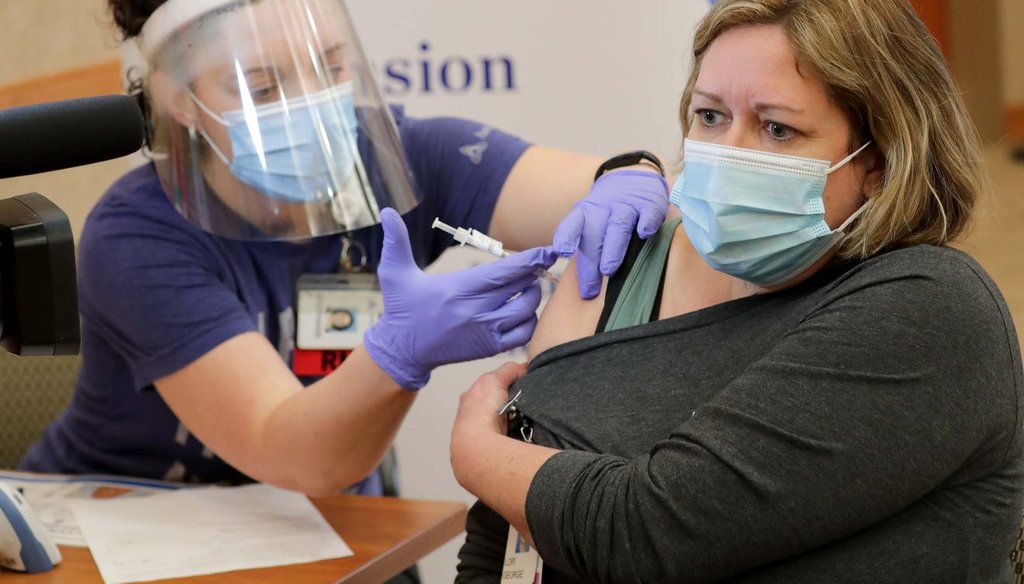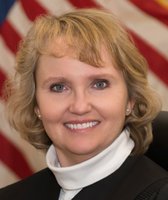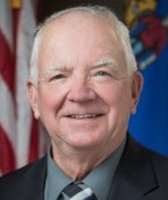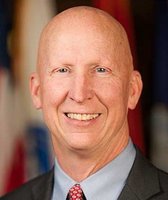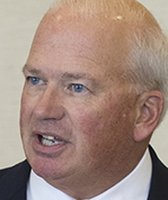For all that 2020 was, there is one thing it clearly wasn’t: The Year of the Agreed-Upon Fact.
Perhaps never in modern history has the notion of objective truth come under such relentless assault, particularly online. It was a year where the reach of social media far exceeded its grasp on reality.
In short, it was historically fertile ground for fact-checking.
So as 2020 mercifully fades from the calendar, we’re taking a look back at some of our most-clicked items from the year. They cluster around three defining events:
-
The COVID-19 pandemic: This fundamentally altered life in Wisconsin and the rest of the world throughout 2020, while triggering debate on the science behind it and leaders’ response to it.
-
The presidential election: Wisconsin’s status as a battleground state made it a frequent campaign stop and target for misinformation — particularly after Election Day.
-
The social justice movement: This national discussion became an intensely local one in the wake of a pair of Kenosha shootings.
The common thread through each of this was the escalating spirit of partisanship and division, as citizens and politicians alike were emboldened by the volume of people willing to take any worldview-affirming claim as gospel.
Here are 10 fact-checks from PolitiFact Wisconsin that helped define 2020.
COVID pandemic
Wisconsin is "clearly seeing a decline in COVID infections"
— Wisconsin Republican legislative leaders
This claim came in the early stages of the pandemic in April, one of many ill-fated attempts from Wisconsin politicians to find trends and meaning in COVID-19 numbers that simply weren’t there.
There are a lot of ways to slice the coronavirus data, but this was an exaggeration.
New cases and deaths in the week before this claim were roughly in line with both the preceding week and the averages for the month of April. Hospitalizations had dropped somewhat from the week prior, but were holding steady for the five preceding days.
We rated this claim Mostly False.
Says the April 22 jump in COVID-19 cases was related to the primary election.
— State Sen. Chris Larson, D-Milwaukee
Days after Republicans whiffed on their claim of a downtrend, Larson botched the data work attempting to tie a rise in case numbers to the April 7 primary election.
The increase that day was actually due primarily to a spike in Brown County, where outbreaks at meat-packing plants led to a surge in new cases. Brown County officials said there was no evidence of a link between their case surge and the election.
We rated Larson’s claim False.
"Wisconsin Republicans have not passed a single bill in 6 months."
— Facebook posts
Republicans passed a COVID-19 response bill in April, but this Facebook post took aim at the Legislative crickets in the months that followed.
Wisconsin is one of 10 states with lawmakers considered full-time by the National Conference of State Legislatures. At the time of the claim, the state Assembly and Senate had met just twice since the pandemic began — for each house to pass the April COVID bill. The other states have met an average of 38 times, with only Illinois (nine meetings) coming in at less than 20.
It’s not unusual in an election year for the Legislature to adjourn from spring until the new year. But the Wisconsin Legislature’s inaction was unusual for this year, as lawmakers have done less than almost any other state to address the pandemic despite their full-time status.
We rated this claim True.
Presidential election
Says a picture of stacked mailboxes is proof of voter suppression in Wisconsin
— Facebook posts
Amid the pre-election debate over the security of mail-in voting (fraud is exceedingly rare, for the record), one claim that drew a particularly large audience was built around a picture of stacks of mailboxes. Viral social media posts described the photo as originating in Wisconsin.
The picture is from Wisconsin, taken at a Hartford company, but it’s not proof of anything nefarious.
The U.S. Postal Service contracts with Hartford Finishing to repair or destroy old mailboxes. The mailboxes shown could have been removed — after a public notice — due to lack of use (following a long-established process), or they could have been replaced with new boxes due to their condition.
We rated this claim False.
"A day AFTER the election, (Democrat Joe) Biden receives a dump of 143,379 votes at 3:42AM (in Wisconsin), when they learned he was losing badly. This is unbelievable!"
— President Donald Trump
The pre-election misinformation was nothing compared the avalanche of nonsense about Wisconsin votes once we saw how close and pivotal the state was to Trump’s reelection chances. This claim was among the most pervasive, surfacing in numerous forms.
But this isn’t evidence of fraud — it’s evidence of someone who doesn’t understand the vote counting process in Wisconsin.
That jump in Biden votes came when Milwaukee reported its 170,000 absentee ballots all at once. We knew long before the election the city ballots would be reported late and would weigh heavily in Biden’s favor, given that Milwaukee is heavily Democratic and mail-in votes as a whole strongly favored Biden as well.
We rated this claim Pants on Fire.
Wisconsin voter turnout jumped from 67% in 2016 to 89% in 2020.
— Donald Trump Jr.
This widespread claim was one of many that used shoddy math to try to show something shady happened in Wisconsin. Because of same-day registration in Wisconsin, turnout is measured as a percentage of eligible voters, not registered ones. What’s more, Trump, the president’s son, used eligible voters for the 2016 figure but registered voters for 2020 — a fundamental apples and oranges comparison.
Using the proper denominator for 2020 (eligible voters) shows a turnout around 72%, firmly in the range of past presidential elections.
We rated this Pants on Fire.
Kenosha
"If I didn’t INSIST on having the National Guard activate and go into Kenosha, Wisconsin, there would be no Kenosha right now."
— President Donald Trump
When Kenosha had cooled down several days after the shootings, Trump was quick to claim credit. But he was wrong on every level.
It’s a vast exaggeration to say the situation in Kenosha was so dire as to threaten its very existence. And many other factors played a role in the reduced violence in the days before Trump’s tweet.
But the most fundamental element of this claim is also completely wrong. National Guard troops were en route and even on the ground well before the Trump administration got involved.
The National Guard troops ultimately sent were deployed in Wisconsin by Evers and state Guard officials, or sent from other states as part of agreements entered into by the states’ governors.
We rated this claim Pants on Fire.
Says video shows Kyle Rittenhouse, the 17-year-old charged with killing two protesters in Kenosha, "was trying to get away from them" ... "fell, and then they violently attacked him."
— President Donald Trump
Rittenhouse did fall as a crowd followed him, but Trump’s comments left an incendiary and false picture: By the time he fell, according to criminal charges, Rittenhouse had already shot and killed one person that night.
We rated the claim False.
Partisanship
"Wisconsin is the only state where all Republicans voted against protecting its citizens."
— Facebook post
This claim was referencing a pandemic measure that included free testing for COVID-19, paid emergency leave and other emergency appropriations. It easily passed both houses of Congress — 363-40 in the U.S. House and 90-8 in the U.S. Senate — and was signed into law by Trump on March 18, 2020.
Wisconsin was indeed the only state where all Republicans opposed the bill, but it was a bit of an exaggeration to summarize their decisions as a vote "against protecting (Wisconsin) citizens."
We rated this claim Mostly True.
Says America’s most violent cities are that way because of their Democratic politics
— Facebook post
The June 16, 2020, post listed "America’s deadliest cities," including Milwaukee, citing FBI crime data. It then labeled each as having a "Democrat majority."
The data cited has some fundamental issues, notably that it uses out-of-date FBI data and ranks cities by crime rate when the FBI specifically warns against doing so.
The simplistic claim also glosses over the array of intensely local factors that influence crime. Violent crime, in particular stems, from a limited group of people in a limited area, so assuming that segment has a particular political bent based on the city at large — and that their violence stems from those politics — is a stretch at best.
Large cities do have more crime. And they do have more Democrats — both in terms of general voting and local leadership. But it’s a classic example of correlation without evidence of causation.
We rated this Mostly False.
Related:
Top election fact checks of 2020
Top Kenosha fact checks of 2020
Top Flip-O-Meter fact checks of 2020
Top Pants on Fire fact checks of 2020
Top COVID-19 fact checks of 2020
